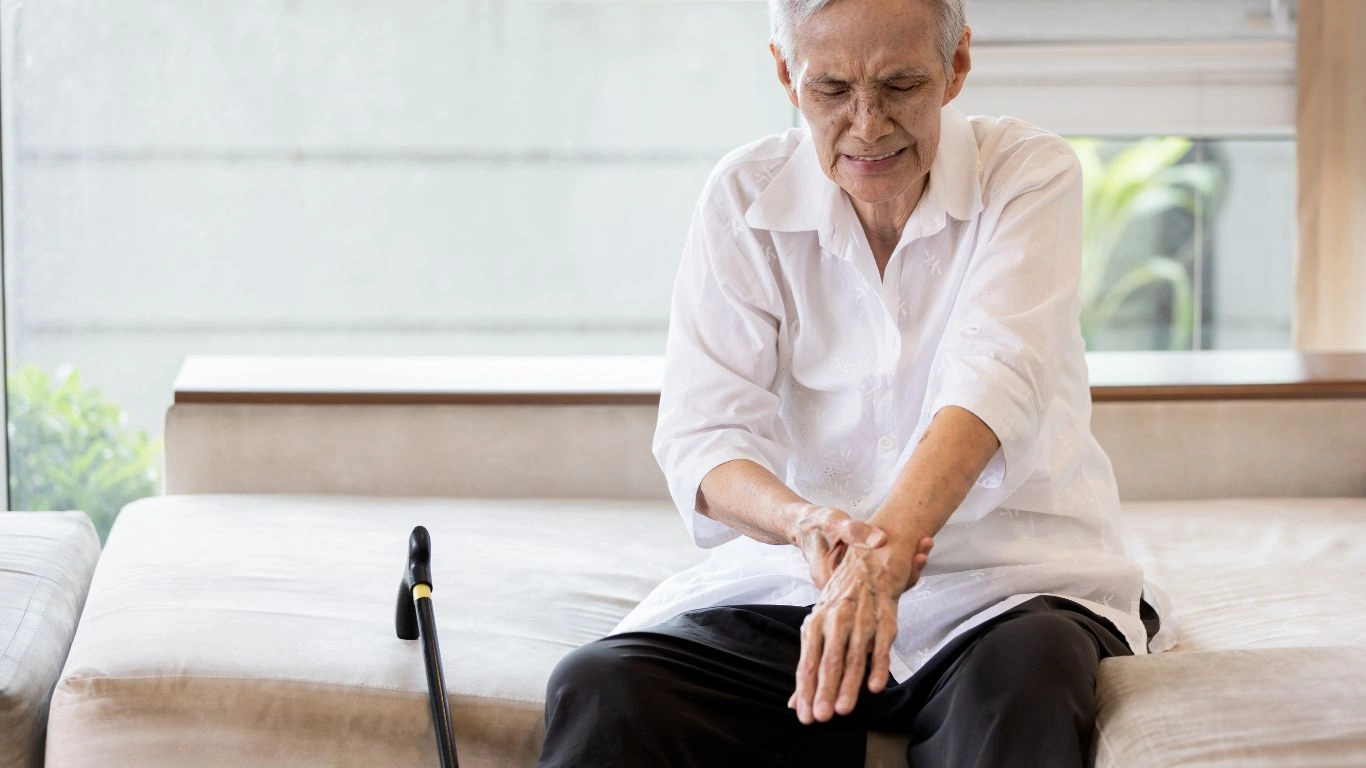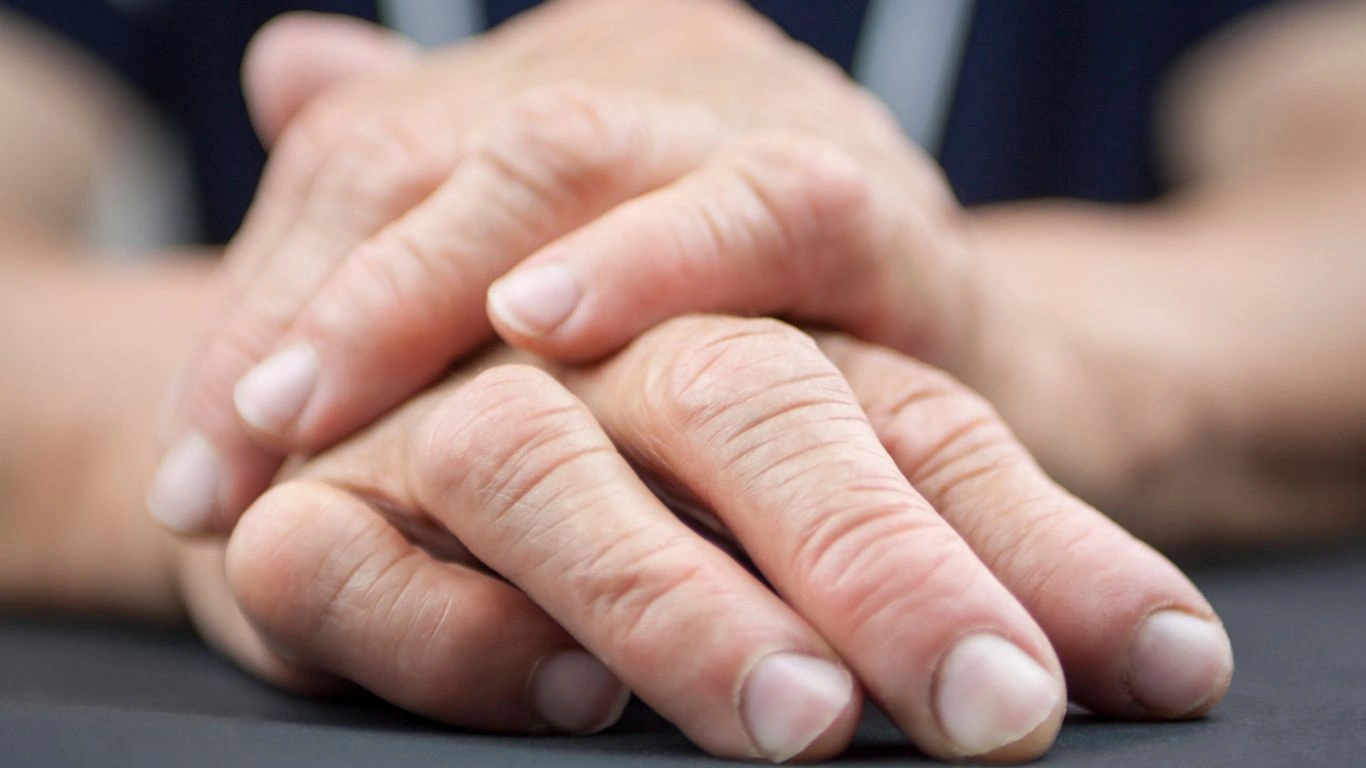Rheumatoid Arthritis: Manage Symptoms and Live Well with RA
Rheumatoid arthritis (RA) can be a tough condition to deal with, especially when it comes to managing symptoms. But trust me, you’re not alone in this. Having worked with countless patients over the years, I’ve seen firsthand how overwhelming RA can feel when you’re just trying to get through your day. The good news is that, with the right approach, it’s completely possible to manage symptoms and live a fulfilling life, even while dealing with RA. Let’s dive into how we can do just that.
Understanding Rheumatoid Arthritis: What It Is and How It Affects the Body
Rheumatoid arthritis is an autoimmune condition where the body’s immune system mistakenly attacks the joints, causing inflammation and pain. Unlike osteoarthritis, which is caused by wear and tear on the joints, RA can affect any joint in the body, often starting with the hands, wrists, and knees.

Over time, RA can lead to joint damage, stiffness, and even deformities, making movement difficult. The inflammation that RA causes isn’t just limited to the joints either – it can affect organs like the heart, lungs, and eyes. This is why managing symptoms is crucial to prevent further damage and maintain overall health.
Symptoms of Rheumatoid Arthritis: What to Look For
If you’re not sure whether you might have RA or not, it’s important to know the signs. The early symptoms can be subtle, but they tend to worsen over time if left unchecked. Some of the most common symptoms include:
- Joint pain – This is usually the first and most obvious symptom. It tends to be worse in the morning or after long periods of rest.
- Stiffness – You might notice that your joints feel stiff, especially in the hands, wrists, or knees, making it harder to perform everyday tasks.
- Swelling – Inflamed joints may swell up, making them look puffy or red.
- Fatigue – Feeling unusually tired or exhausted is a hallmark of RA, even if you’ve had a full night’s sleep.
- Fever – In some cases, people with RA experience a mild fever along with other symptoms.
How to Manage Symptoms of Rheumatoid Arthritis Effectively
When it comes to managing symptoms, the key is a comprehensive approach that combines medical treatment, lifestyle changes, and regular monitoring. Based on my experience, I’ve seen patients improve significantly when they actively participate in their treatment plan. Let’s break it down.
Medications for RA: What Works Best
The cornerstone of RA treatment is medication, and there are several options available to help control the inflammation and pain. The goal is to stop or slow the progression of the disease and prevent joint damage. Here are some of the main types of medications used:
- Nonsteroidal anti-inflammatory drugs (NSAIDs) – These drugs, like ibuprofen or naproxen, help reduce inflammation and provide pain relief. They’re often the first line of defense against mild RA symptoms.
- DMARDs (Disease-modifying antirheumatic drugs) – These are medications that target the underlying immune system dysfunction, slowing the progression of RA and preventing joint damage. Methotrexate is one of the most commonly prescribed DMARDs.
- Biologics – If traditional DMARDs don’t work, biologic drugs may be used to target specific parts of the immune system. These medications are often given via injection or infusion and can be very effective in controlling symptoms.
- Corticosteroids – Prednisone is often used for short-term flare-ups to reduce inflammation and provide rapid symptom relief.
In my clinical practice, I always work with my patients to find the right combination of medications based on their symptoms, overall health, and any other conditions they may have. It’s all about finding a treatment plan that works for the individual.
Exercise and Physical Therapy: Keeping Your Joints Healthy
While it may sound counterintuitive to exercise when your joints hurt, physical activity is actually one of the best ways to manage RA symptoms. Regular exercise helps maintain joint flexibility, strengthen muscles around the joints, and reduce fatigue. However, the key is to choose the right exercises that won’t aggravate your symptoms.

Some great options for people with RA include:
- Low-impact activities – Walking, swimming, and cycling are all excellent choices that put minimal stress on the joints.
- Strength training – Strengthening the muscles around your joints can provide more support and reduce the strain on them. Work with a physical therapist to ensure you’re doing it safely.
- Stretching – Gentle stretching exercises can help improve flexibility and reduce stiffness in the joints.
Physical therapy can also be incredibly beneficial, especially if you’re experiencing significant joint damage. A physical therapist can teach you proper techniques to protect your joints while performing everyday activities, as well as guide you through tailored exercises to strengthen specific areas of the body.
Nutrition and RA: The Role of Diet in Managing Symptoms
Did you know that what you eat can play a huge role in managing your RA symptoms? Inflammatory foods can make symptoms worse, while anti-inflammatory foods can help reduce pain and inflammation. Over the years, I’ve recommended certain diets to my patients, and many have found significant improvements in their symptoms when they made dietary changes.
Here are some general guidelines for a diet that supports RA management:
- Anti-inflammatory foods – Foods rich in omega-3 fatty acids, like salmon, walnuts, and flaxseeds, have been shown to reduce inflammation. Additionally, a plant-based diet filled with vegetables, fruits, and whole grains can help control RA symptoms.
- Avoid processed foods – Processed foods, sugary snacks, and fried foods can contribute to inflammation and worsen RA symptoms.
- Consider supplements – Some people find relief by adding supplements like vitamin D, calcium, and turmeric to their routine. But be sure to consult with your doctor before adding new supplements to your diet.
Every person’s body is different, so I always recommend working with a nutritionist or your healthcare provider to create a personalized meal plan that suits your needs. But the idea is to reduce foods that promote inflammation and focus on those that help manage it.
Understanding the Impact of Rheumatoid Arthritis on Daily Life
When you’re dealing with rheumatoid arthritis (RA), it’s not just about the physical pain, though that’s definitely a big part of it. RA has a profound impact on almost every aspect of life – from your mental and emotional well-being to how you go about your daily tasks. It’s one thing to read about the disease, but once you or someone you care about is living with it, the experience can really hit home. Let’s dive into how RA affects daily life and some strategies to cope.

First off, the joint pain and stiffness from RA can make even the most basic tasks feel overwhelming. I’ve heard people say that getting out of bed in the morning can feel like a major workout. Imagine trying to move your hands and feet when they’re swollen and stiff – getting dressed, brushing your hair, or even holding a cup of coffee can become big challenges. And it’s not just about pain; it’s about the unpredictability of it all. Some days, your body feels like it’s working with you, while on others, it feels like a total battle. That’s something I’ve seen friends and family members go through, and it’s frustrating as heck.
What’s Really Happening in Your Body?
RA is an autoimmune disease, meaning your immune system gets a little too enthusiastic and starts attacking your own healthy tissues. Specifically, it targets the synovium – the lining of the joints. This leads to inflammation, which can cause pain, swelling, and, over time, joint damage. But, it’s not just your joints that are at risk. RA can affect your organs, like your heart and lungs, and contribute to other health issues like osteoporosis. So, while the pain in the joints is the most noticeable symptom, there’s a lot more going on beneath the surface.
How Rheumatoid Arthritis Affects Mental Health
Living with a chronic condition like RA doesn’t just take a toll on your body; it can mess with your mind too. The stress of coping with constant pain, not to mention the frustration of not being able to do things you once could, can lead to feelings of isolation and even depression. I’ve known people with RA who felt really alone because they didn’t know how to explain their struggle to others who didn’t understand. Plus, the unpredictability of flare-ups can create a constant sense of uncertainty, which can be mentally exhausting.

That’s why it’s so important to seek support – both emotionally and mentally. Therapy, support groups, or even just talking to a trusted friend or family member can make a huge difference. And for me, personally, I’ve found that practicing mindfulness and self-compassion goes a long way. A little gratitude can help you stay grounded on the tough days. You won’t always feel better, but having tools to handle the mental load of RA is crucial to thriving, not just surviving.
Managing the Physical Symptoms of RA
Okay, so now that we’ve talked about the emotional impact, let’s tackle the physical side. Managing RA symptoms requires a holistic approach that combines medication, lifestyle changes, and, honestly, some patience. Medications are a big part of RA management, and there are a variety of options available, from anti-inflammatory drugs to disease-modifying antirheumatic drugs (DMARDs) that slow the progression of the disease. But it’s also about finding the right balance and working closely with your doctor to fine-tune your treatment plan.
But medication alone isn’t enough. Exercise is critical, and I’m not talking about anything extreme. Simple movements like stretching, walking, or even swimming can help keep your joints flexible and reduce pain. You might have heard that rest is important, and while that’s true, too much rest can actually make things worse. It’s all about finding that sweet spot between activity and rest – a little movement every day can go a long way in managing your symptoms.
The Role of Nutrition in RA Management
What you eat can play a significant role in managing RA symptoms too. Certain foods, like those rich in omega-3 fatty acids (think salmon, flaxseeds, and walnuts), are known for their anti-inflammatory properties. On the flip side, there are foods that can make inflammation worse, such as processed sugars and refined carbs. I know it can be tough to make dietary changes, but trust me, cutting down on those inflammatory foods and adding more whole, nutrient-rich options to your plate can help with overall well-being.
Additionally, supplements like turmeric and ginger, which are known for their anti-inflammatory effects, might be worth discussing with your healthcare provider. And let’s not forget the importance of staying hydrated. I can’t tell you how many people I know with RA who say they feel a lot better when they make a point to drink enough water each day. It’s one of those simple but effective habits that can make a real difference.
Alternative Therapies for RA Relief
If you’re like me and don’t always want to rely solely on medications, there are a variety of alternative therapies that might offer relief. Acupuncture, for example, has been shown to help with pain management and improve circulation. Some people also swear by chiropractic care or massage therapy. However, it’s always important to talk to your doctor before trying new treatments to make sure they’re a good fit for your situation.
Another interesting option that has been gaining traction is cannabis. While not for everyone, some people with RA find relief from their symptoms through CBD or medical marijuana. Again, this is something to discuss with your doctor, especially if you’re on other medications that might interact with it.
Building a Support Network
Living with rheumatoid arthritis can feel overwhelming, but it doesn’t have to be a solitary journey. One of the most important steps you can take is building a solid support network. Whether it’s your family, friends, or a community of people with similar experiences, having support makes a world of difference. A support group specifically for RA can offer practical advice, emotional reassurance, and sometimes just a place to vent. Knowing that there are people who get it can help you feel less isolated and more empowered.
If you’re not sure where to start, many organizations, such as the Arthritis Foundation, offer resources, both online and in-person, to connect people with similar experiences. Don’t hesitate to reach out for help – it’s not a sign of weakness, but a step toward taking control of your life despite the challenges RA throws at you.
Conclusion: Finding a New Normal with Rheumatoid Arthritis
At the end of the day, living with rheumatoid arthritis isn’t easy. It changes how you see the world and your place in it. But over time, you start to find ways to live your life around it, rather than letting it completely take over. It’s all about adjusting your expectations, building your support system, and being open to different treatments and coping strategies. RA might not have a cure, but with the right approach, it’s possible to manage the disease and live a fulfilling life.
Remember, you’re not alone in this. There are countless resources, treatments, and communities out there to help you navigate your RA journey. Stay positive, stay active, and take things one step at a time. Your health and happiness are worth the fight, and every small victory counts.
Case Studies & Real-Life Examples
Sometimes the best way to really understand something is through real-life experiences. Hearing from people who are actually living with rheumatoid arthritis (RA) can provide valuable insights that go beyond what you read in textbooks or hear from doctors. So, let’s take a look at a few real-life stories of individuals with RA who have learned to manage their condition in different ways.
Take Sarah, for example. Sarah was diagnosed with RA when she was in her late 20s. Initially, it was devastating. She was active, loved hiking, and spent her weekends outdoors. Suddenly, her joints were swelling, she couldn’t keep up with her usual pace, and she felt as though her whole identity was being stripped away. But over time, she found a balance. By working closely with her rheumatologist and exploring different medications, Sarah discovered that the combination of DMARDs and occasional biologic treatments worked best for her. She also incorporated gentle yoga into her routine, something that helped with both flexibility and mental clarity. Sarah says that her key takeaway was that RA wasn’t the end of her active life, but a new chapter that required a bit of reinvention.
Another story is from Mike, who’s been living with RA for over a decade. Mike’s journey with RA started later in life, when he was in his 50s. He was no stranger to discomfort, but he didn’t expect the severity of the symptoms that RA brought. In his case, one of the biggest challenges was dealing with the fatigue that RA brought along with the joint pain. He had to completely adjust his lifestyle to accommodate his new energy levels. Mike focuses on a combination of diet, exercise, and medication to manage his symptoms. He’s a big believer in food as medicine, and swears by a diet high in anti-inflammatory foods. He also takes part in a local RA support group, where members share tips and emotional support. Mike’s story is a testament to the power of community and the idea that you can live well with RA if you make the right adjustments.
Both Sarah and Mike, though they had different experiences, have one thing in common: they didn’t let their diagnosis define their future. Their stories show that with the right approach, it’s possible to live a full and satisfying life, despite RA’s challenges.
Key Takeaways: What You Need to Remember
If you’re reading this and trying to make sense of everything, here are some key takeaways that might help clarify things and guide you in managing rheumatoid arthritis:
- RA is a chronic but manageable disease. While there’s no cure for RA right now, it’s possible to manage the disease with the right combination of medication, lifestyle changes, and emotional support.
- Medications are important, but so are lifestyle changes. It’s not just about popping pills. A balanced approach that includes exercise, nutrition, and mental health care is essential for managing symptoms and maintaining a good quality of life.
- RA affects more than just your joints. It’s an autoimmune condition, so it can impact other parts of your body, like your heart, lungs, and eyes. Make sure to work with your doctor to monitor your overall health, not just your joints.
- It’s okay to seek help. Whether it’s from family, friends, or support groups, don’t be afraid to reach out. There’s no need to face RA alone.
- Be patient with yourself. RA can be unpredictable, so it’s important to take things day by day. Some days will be better than others, and that’s okay. Allow yourself the grace to take breaks and adjust when needed.
FAQs
If you’re still curious about rheumatoid arthritis, here are some frequently asked questions (FAQs) that might help clear things up:
- Can RA be cured? Unfortunately, there is no cure for rheumatoid arthritis, but it can be managed effectively with the right treatment plan, including medications, lifestyle changes, and physical therapy.
- What should I do if I’m diagnosed with RA? First, work closely with your healthcare team to develop a treatment plan tailored to your needs. Take time to learn about RA, and consider joining a support group. Remember, early intervention is key to managing the disease effectively.
- Is it okay to exercise with RA? Yes, in fact, exercise is crucial for managing RA symptoms. It helps improve joint flexibility, strengthen muscles, and combat fatigue. Be sure to consult your doctor to develop a workout plan that works for you.
- What are the first signs of RA? Early symptoms can include joint pain, swelling, and stiffness, particularly in the hands, wrists, and knees. If you notice persistent pain or swelling in your joints, it’s important to see a doctor for an evaluation.
Bonus: Additional Resources or DIY Tips
If you’re living with RA or supporting someone who is, there are plenty of additional resources and tips that can help make things easier:
- Join online forums and support groups. Platforms like Reddit and Facebook have RA communities where people share their experiences, offer advice, and support each other.
- Try a warm bath or heat packs. Many people with RA find relief from stiff joints by soaking in a warm bath or using heat packs to relax the muscles around their joints.
- Consider guided meditation or yoga. Practicing mindfulness can help with managing stress and pain. Apps like Calm or Headspace offer guided meditation sessions specifically for chronic pain.
- Utilize adaptive tools. Simple things like a jar opener, grip aids, or cushioned pens can make a huge difference when daily tasks become more challenging.
Appendix: Table, References, Disclaimer, and Call to Action
Before wrapping up, here’s a quick look at some additional resources and a few helpful tables to guide you in managing RA. (Note: Always consult your doctor before making significant changes to your treatment or lifestyle.)
| Resource | Link |
|---|---|
| Arthritis Foundation | www.arthritis.org |
| Rheumatoid Arthritis Support Group | www.rheumatoidarthritis.org |
| National Institute of Arthritis and Musculoskeletal and Skin Diseases | www.niams.nih.gov |
Disclaimer: The information provided in this article is for educational purposes only and should not be considered as medical advice. Always consult with a healthcare professional for personalized treatment and advice.
Call to Action: Whether you’re dealing with RA or supporting someone who is, it’s important to stay informed and proactive. Connect with support groups, explore treatment options, and don’t hesitate to reach out for help. You’ve got this, one step at a time!

Tarra Nugroho is a dedicated Nurse Practitioner with a strong foundation in family and preventive care. She brings both compassion and clinical expertise to her practice, focusing on patient-centered care and health education. As a contributor to Healthusias.com, Tarra translates medical knowledge into clear, empowering articles on topics like women’s health, chronic disease management, and lifestyle medicine. Her mission is simple: help people feel seen, heard, and informed—both in the clinic and through the content she creates. When she’s not caring for patients, Tarra enjoys weekend hikes, plant-based cooking, and curling up with a good health podcast.






